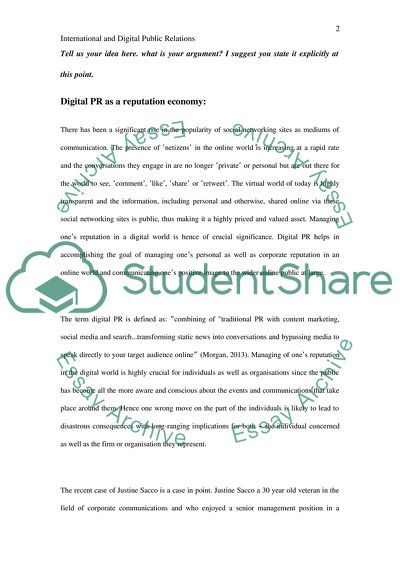Cite this document
(Digital PR - Why Reputation Is Central in the Creative Economy Case Study Example | Topics and Well Written Essays - 2000 words, n.d.)
Digital PR - Why Reputation Is Central in the Creative Economy Case Study Example | Topics and Well Written Essays - 2000 words. https://studentshare.org/journalism-communication/1863615-international-and-digital-public-relations
Digital PR - Why Reputation Is Central in the Creative Economy Case Study Example | Topics and Well Written Essays - 2000 words. https://studentshare.org/journalism-communication/1863615-international-and-digital-public-relations
(Digital PR - Why Reputation Is Central in the Creative Economy Case Study Example | Topics and Well Written Essays - 2000 Words)
Digital PR - Why Reputation Is Central in the Creative Economy Case Study Example | Topics and Well Written Essays - 2000 Words. https://studentshare.org/journalism-communication/1863615-international-and-digital-public-relations.
Digital PR - Why Reputation Is Central in the Creative Economy Case Study Example | Topics and Well Written Essays - 2000 Words. https://studentshare.org/journalism-communication/1863615-international-and-digital-public-relations.
“Digital PR - Why Reputation Is Central in the Creative Economy Case Study Example | Topics and Well Written Essays - 2000 Words”. https://studentshare.org/journalism-communication/1863615-international-and-digital-public-relations.


